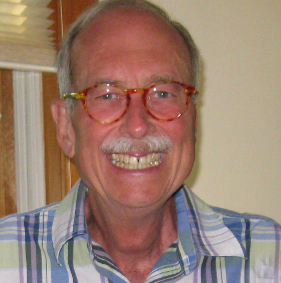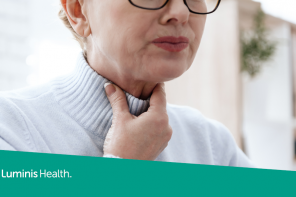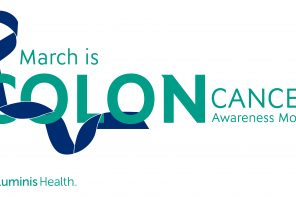Robert Smith was a healthy 62-year old runner when he first found the lump on the left side of his neck. Stage 4 head and neck cancer took him completely by surprise. A little more than a year later, after surgery, chemotherapy, and radiation therapy, the Annapolis attorney is cancer free and putting his life back together. He looks back on the whirlwind year he spent in treatment, thankful that he had a nurse navigator to guide him through the complicated process, and the Oncology Survivorship Rehabilitation Program to support him as he continues his road to recovery.
My wife, Sherrie and I were, in a word “terrified.” We had no idea what we were about to encounter, who to go to for help, and most importantly what resources are available to treat the various symptoms and side effects that arise during and after treatment.
It all works because of the nurse navigators and what they do. They’re like the air traffic controllers at the airport that direct everything. From setting up appointments, dealing with insurance companies, and even arranging for medical equipment to be delivered to your house.
My nurse navigator Jackie Shanahan was indispensable during the entire treatment and follow-up process and worked with my wife and me all the way. She scheduled all appointments with doctors and the infusion center for hydration, she put us in touch with the right people, answered our questions honestly, and walked us through everything, including helping us learn to take care of the feeding tube, suggesting shakes and even ordering the suction machine when I needed it. If we needed anything at all, all we had to do was call. She got us medicine and doctor’s slips for blood tests. She did the paperwork for medical insurance purposes. She helped us understand and obtain the resources that were available at each stage of the process.
I had some swallowing, talking, and eating issues, and Jackie referred me to a speech therapist to work on my speech and learn to eat solid food again. She also made an appointment for a lymphedema therapist at the hospital who helped me with swelling and stiffness in my face and neck.
During this time, I was one of the first people in the Oncology Survivorship Rehabilitation Program that’s just starting, and it was a huge resource. Following active treatment is when patients need the most care to sort out how to handle the various symptoms and get back their daily lives. The nurses there sent me to see a nutritionist for my weight issues. I was given a booklet with contact information for my entire medical team and a summary of my diagnosis, surgery and treatment. They gave me monitoring guidelines, recommendations for risk factors and possible side effects I might still encounter. They have everything covered and they pledged to be available whenever I have a need.
We have a hidden jewel just a couple miles away from my home, with the most amazing medical care right in our own back yard. What they do is not paid by medical insurance, but they are so essential to the whole program. The costs of nurse navigators are absorbed by the hospital, and I just don’t know how it would work without them.
Treating cancer takes a village, and that’s what I’ve got, a medical village, and I know who to contact and what is available to me. I have not been left at home alone in the dark.




